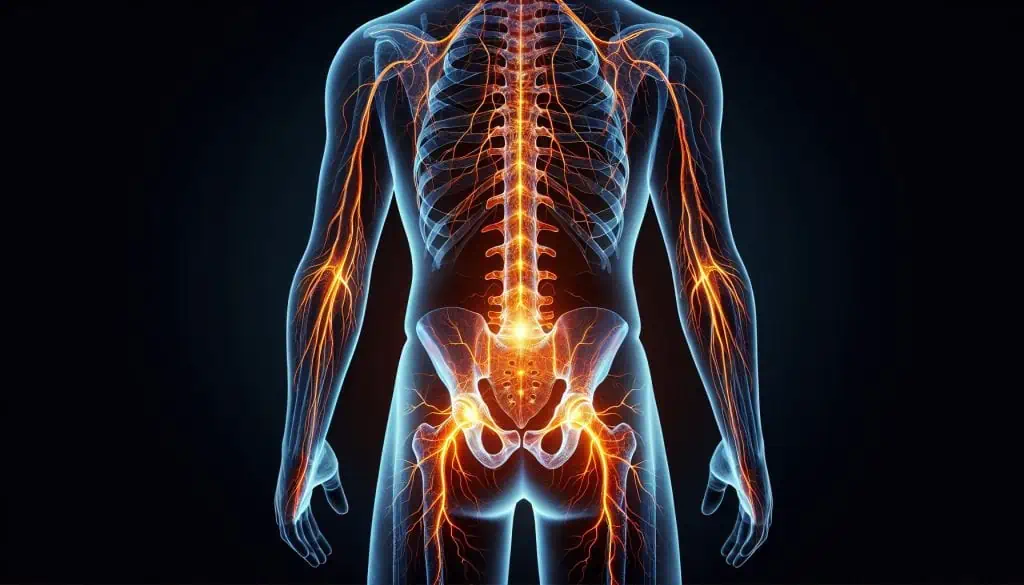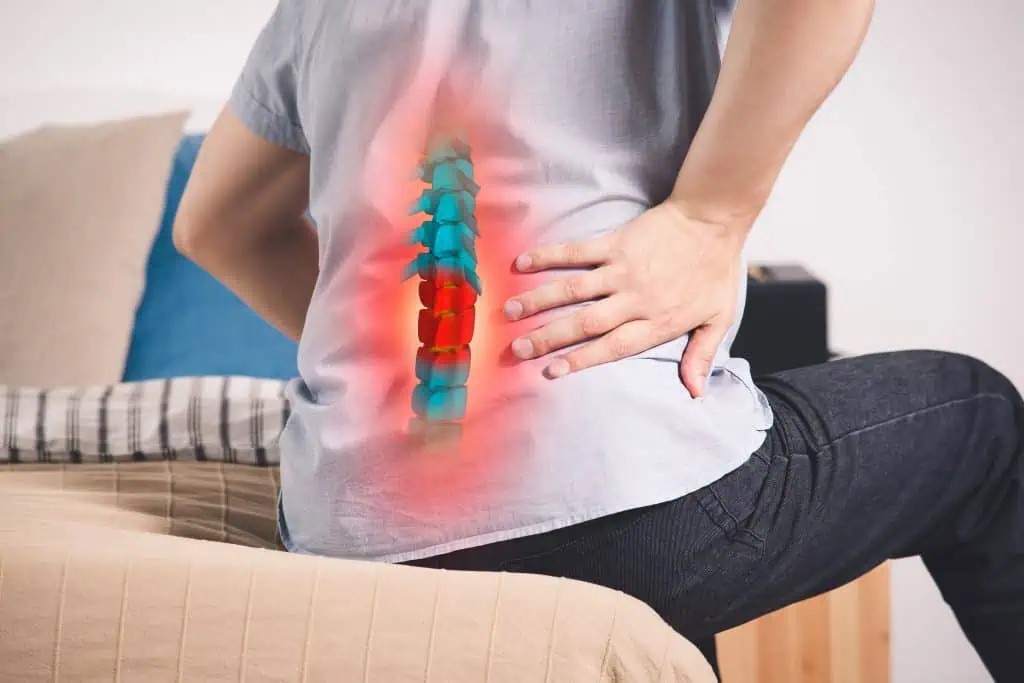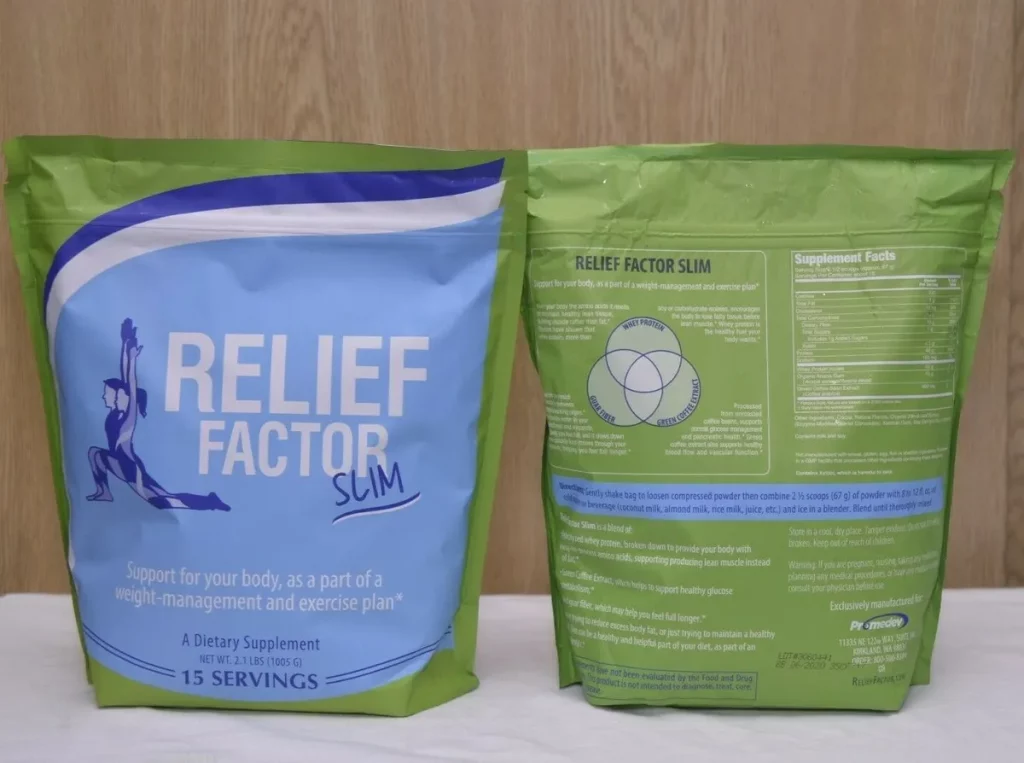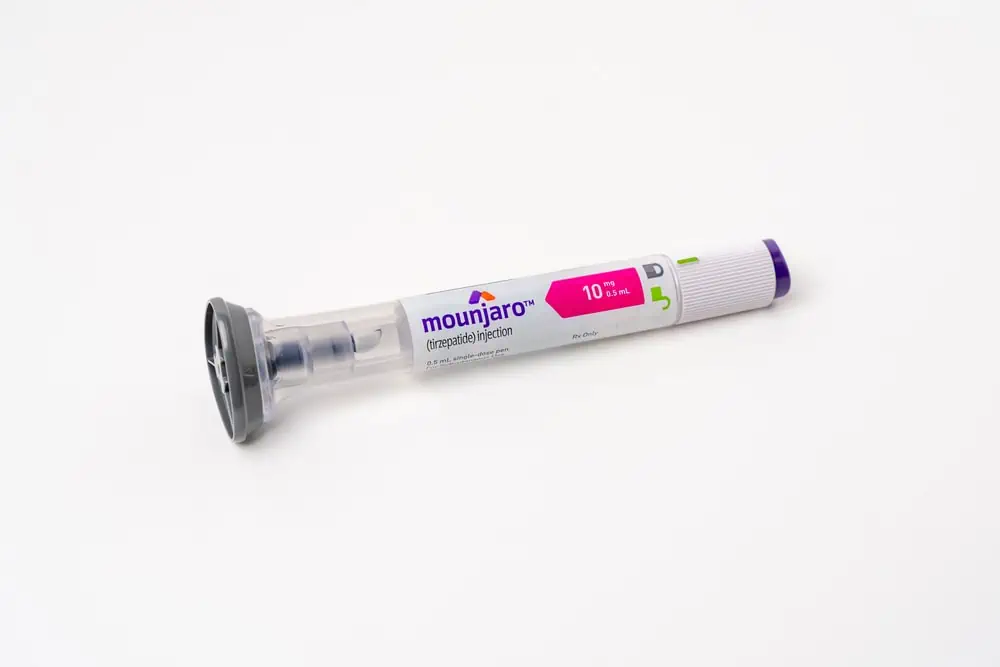Familiar with the relentless sting of sciatica pain? The nagging discomfort that starts in your lower back and travels down one leg? Fear not – relief may be closer than you think. Harnessing the power of therapeutic sciatica massage techniques, learn soothing relief tips for your sciatica symptoms and reclaim your life from the clutches of this nerve pain.
Key Takeaways
- Sciatica is a condition that causes lower back, hip and leg pain due to the irritation of the sciatic nerve.
- Massage therapy can effectively reduce pain levels and improve overall health.
- Consult with a healthcare professional before getting a massage for optimum relief. Combine this with self-help techniques such as stretching & heat therapy for best results.
Understanding Sciatica and Its Impact on Your Life

Sciatica, a condition characterized by pain in the lower back, hips, and legs, is caused by the irritation of the sciatic nerve – the longest and widest nerve in the human body. The pain, typically affecting one side of the body, can vary in intensity, often radiating from the lower back down to the length of one leg.
Several potential factors like herniated discs, spinal stenosis, degenerative disc disease, and spondylolisthesis often contribute to the onset of sciatica pain. Natural wear and tear from physical activities can also cause shifts or breakdown of bones, disks, and ligaments, thereby amplifying the likelihood of experiencing sciatic nerve pain. The good news? Massage techniques can help manage this pain.
The Role of Massage Therapy in Sciatica Pain Relief

Massage therapy, including massage for sciatica, contributes to the management of sciatica pain as effectively as a soothing lullaby pacifies a restless baby. Research shows that massage therapy is an effective method for managing both acute and chronic sciatic pain, leading to a reduction in pain levels and improvement in overall health. Techniques like Swedish massage, which applies light to medium pressure, relax muscles and improve blood flow, while others that focus on loosening muscles and releasing tension can help ease flare-ups of sciatica pain.
Consider elevating your massage therapy experience. Advanced massage options like massage chairs and specific techniques applied along the length of the spine can target areas of discomfort more accurately. Like any other treatment, effective communication remains critical. Make sure to converse effectively with your massage therapist about your specific areas of discomfort and ensure that the massage is adjusted accordingly to give you soothing relief.
Mastering the Art of Sciatica Massage: Key Techniques

Similar to the unique role each key on a piano plays in composing a symphony, different massage techniques contribute uniquely to sciatica pain relief. Among these, deep tissue massage, trigger point therapy, and myofascial release stand out as the star performers, each targeting specific areas of tension and discomfort.
Deep Tissue Massage: Reaching Deeper for Pain Release
Imagine using a sturdy broom to sweep away the dust and grime hiding in the farthest corners of your room. That’s the essence of deep tissue massage, a massage technique that applies firm pressure to reach the deep layers of muscles and connective tissues. This massage aims to break up scar tissue and reduce tension, ultimately relieving nerve pain.
You may feel a bit sore initially, but a profound sense of relaxation and pain relief follows within 2-3 days, making the initial discomfort well worth it.
Trigger Point Therapy: Unlocking Knots of Discomfort
Trigger point therapy, on the other hand, is like a master locksmith unlocking tight knots in your body. These tight sections, known as trigger points, can cause pain to spread to other areas when pressure is exerted. By addressing these tense areas and inducing relaxation through the release of endorphins, this therapy contributes to relieving sciatic nerve pain.
Most individuals can anticipate relief from sciatica pain within 24 to 72 hours after undergoing trigger point therapy, making it a reliable ally in your fight against sciatica pain.
Myofascial Release: Easing the Web of Tension
Last but not least, myofascial release therapy is like a gentle breeze easing the web of tension in your connective tissues. This therapy targets the myofascial tissue connected to the muscles in the body, alleviating muscle tension and encouraging relaxation. Imagine a gentler approach, like a feather caressing your skin, identifying tightness or soreness, and then applying steady, light pressure to work through the knots in the muscles.
The benefits of this therapy include reducing spasm of the piriformis muscle, relieving pain in the buttock region, and releasing trigger points associated with sciatica pain, making it an effective tool in your arsenal for sciatica pain management.
Selecting a Qualified Massage Therapist for Sciatica

Choosing a competent massage therapist for sciatica treatment can be likened to seeking a proficient chef well-versed in your preferred cuisine. Research and asking questions about their expertise and experience in treating sciatica could be your key to a pain-free life.
Professionals like massage therapists, sports medicine professionals, and occupational therapists, who hold certification from the National Certification Board for Therapeutic Massage & Bodywork, are qualified for the job. Their experience in dealing with sciatica is crucial because it ensures they are knowledgeable about the condition and capable of providing effective treatment for pain relief. A physical therapist with a background in therapeutic massage can also be a valuable asset in this field.
Did you know? Locating premier massage clinics specializing in sciatica treatment in your vicinity is as simple as using the ‘find a clinic near me’ feature on our website.
Integrating Self-Help Techniques into Your Routine

Think of it as enriching a gourmet meal with a dash of your cherished spices. In much the same way, self-help techniques, like gentle stretches and self-massage, can enhance the effectiveness of professional therapy.
After a self-massage or stretch, utilizing heat therapy or applying medicated creams and gels to the affected area can effectively alleviate pain, thereby enhancing the efficacy of self-help methods.
Stretching the front of the body is also important for alleviating muscle imbalances that could be a factor in sciatic nerve pain, making it a crucial element of self-help routines.
At-Home Massage Tools: Enhancing Sciatica Pain Management
Envision at-home massage accessories like tennis balls and massage rollers being at your service as personal masseuses, available at your leisure. These tools help relieve sciatic nerve pain by loosening tight muscles around the sciatic nerve and mitigating pain.
Using a tennis ball as a massage tool is as simple as placing it on the ground and applying pressure or rolling it over the area of tension to relax muscles and release tightness. Similarly, using a foam roller involves placing it on the ground, lying sideways over it, and applying pressure to sore spots near the sciatic nerve.
what is soothing relief massage?
Soothing relief massage is a highly effective therapeutic approach for managing sciatica, a condition characterized by pain that radiates along the sciatic nerve from the lower back down to the legs. Massage therapy can significantly alleviate the discomfort associated with sciatica by promoting circulation, relaxing tight lower back muscles, and reducing muscle tension in the affected areas. Techniques like deep tissue massage, trigger point therapy, and myofascial release specifically target the muscles that might be pinching the sciatic nerve, such as the piriformis muscle, helping to ease the nerve irritation and improve mobility.
Regular massage sessions not only provide immediate pain relief but also contribute to long-term healing by enhancing flexibility and range of motion. For those suffering from sciatica, integrating massage therapy into their treatment plan can be a comforting and effective method to mitigate pain and improve overall quality of life.

Complementary Therapies for a Holistic Approach
Integrating complementary therapies such as acupuncture and physical therapy into your massage therapy plan is akin to blending complementary colors for a vibrant masterpiece. Some benefits of integrating these therapies include:
- Heightened pain relief
- Enhanced flexibility
- Accelerated recovery from injuries
- Stress reduction
For example, chiropractic care uses spinal manipulation techniques to address the root cause of sciatica without relying on medications. Integrating massage therapy with physical therapy can offer these benefits and more.
Yoga and Pilates also complement other therapies by focusing on muscle strengthening, enhanced flexibility, and pain reduction, particularly beneficial for conditions like herniated discs and piriformis syndrome. Exercises like the piriformis stretch, hip flexor stretch, clams, and quadruped multifidus knee lifts can also aid in the holistic management of sciatica symptoms.
Precautions and Tips Before Getting a Sciatica Massage
Before commencing your massage therapy journey, consultation with a healthcare professional is indispensable. They can assess your personal health condition and determine if massage therapy is an appropriate treatment for you, offering tailored advice on the specific techniques and intensities that would best suit your sciatica case.
Although sciatica massages usually pose no serious complications or risks, it’s necessary to discuss your condition and any potential concerns with your massage therapist prior to treatment to optimize pain relief.
Summary
In the battle against sciatica pain, armed with the power of therapeutic massage techniques, you are not alone. Deep tissue massage, trigger point therapy, and myofascial release can help unlock the door to pain relief. Choosing a qualified massage therapist, integrating self-help techniques into your routine, and utilizing at-home massage tools can all enhance your pain management strategy. Complementary therapies offer a holistic approach, while consultation with a healthcare professional ensures a safe and beneficial massage experience. Your journey to a pain-free life starts here.
Frequently Asked Questions
What is the best massage point for sciatica?
The best massage point for sciatica is the Gallbladder 30 acupressure point (Huan Tiao), located on the outer edge of the buttocks, halfway between the hip and the tailbone.
Where do you put a massage gun for sciatica?
For sciatica, start by applying the massage gun to the side of your body where you feel the pain, working from the top of your hip flexor and quad muscles down to the top of your knee and IT bands. Repeat this motion for 1-2 minutes and repeat as necessary.
What are the symptoms of sciatica?
Sciatica is characterized by pain in the lower back, hips, and legs, typically on one side of the body. The intensity of the pain can range from mild to severe and often radiates down the length of the affected leg.
How can I find a qualified massage therapist for treating sciatica?
To find a qualified massage therapist for treating sciatica, conduct research and ask questions about their experience and expertise. Look for professionals with certification from the National Certification Board for Therapeutic Massage & Bodywork.
What are some at-home massage tools I can use for sciatica pain management?
At-home massage tools such as tennis balls and rollers are effective for sciatica pain management. Applying pressure or rolling these tools on the affected area can help relax tight muscles and reduce pain.












